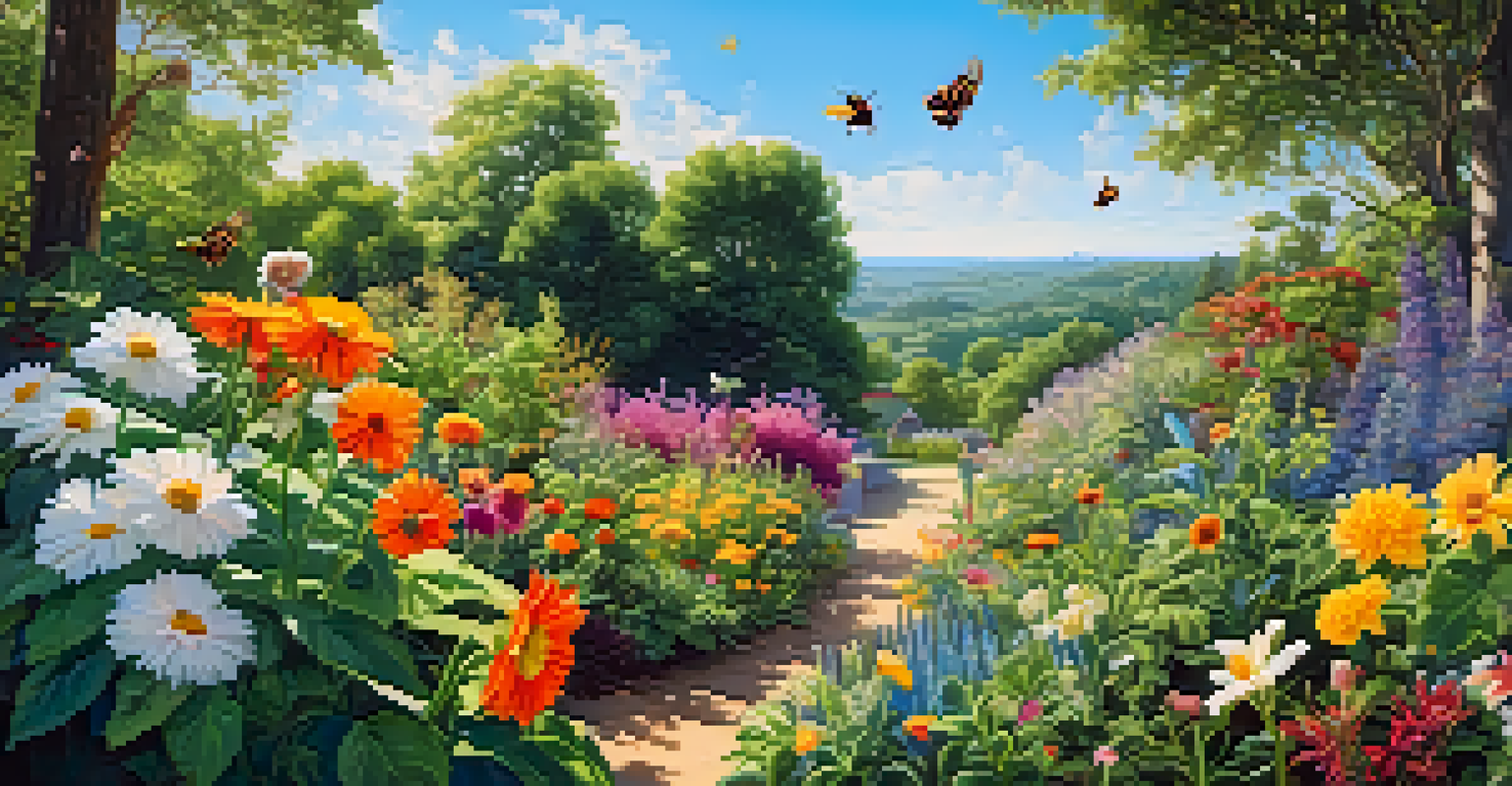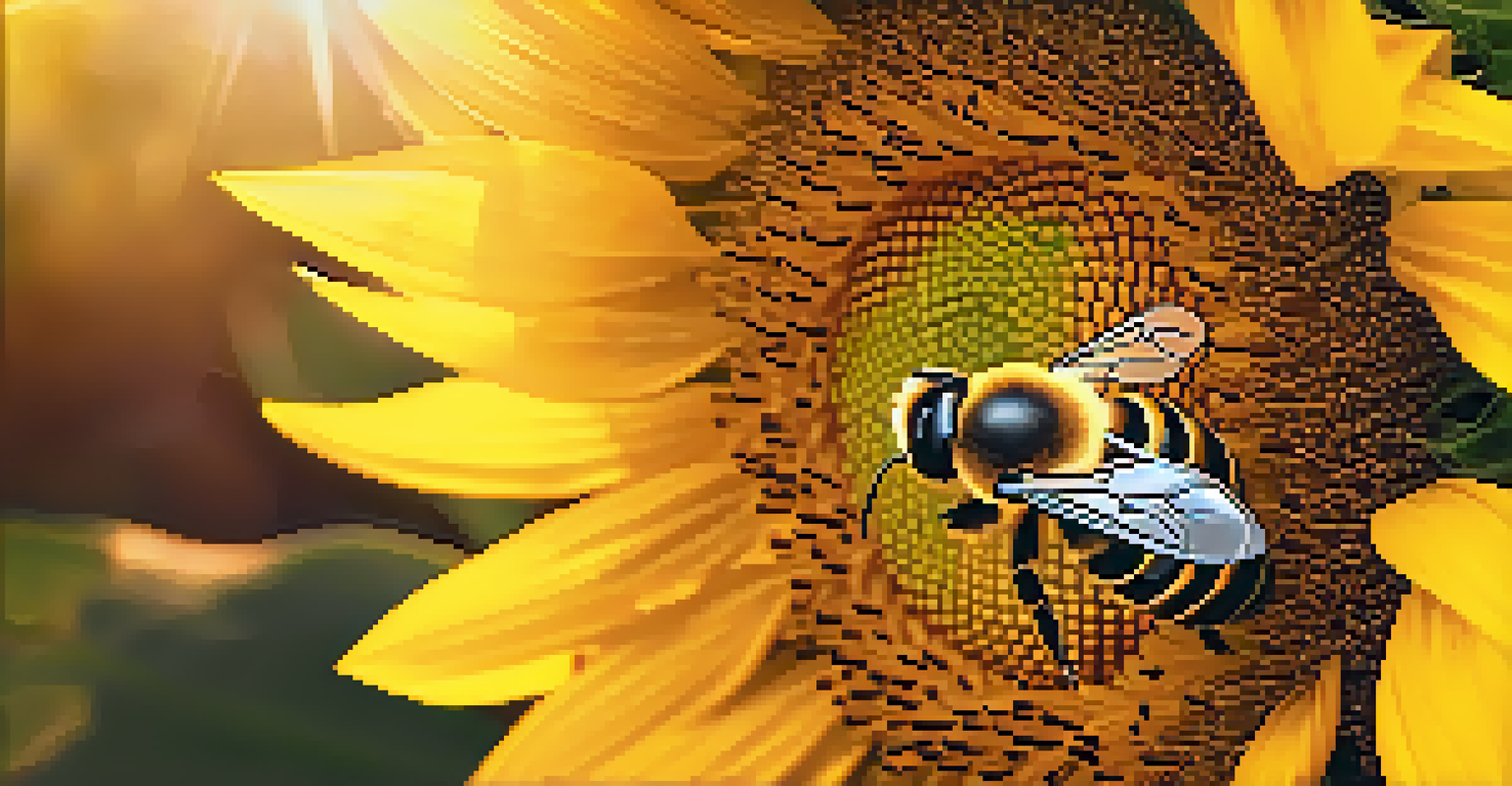The Importance of Pollinators in Agriculture and Ecosystems

Understanding Pollinators: Who Are They?
Pollinators are creatures that help plants reproduce by transferring pollen from one flower to another. Common examples include bees, butterflies, birds, and even bats. These species play a crucial role in the life cycle of many plants, enabling them to produce fruits and seeds that are vital for various ecosystems.
Pollinators are the backbone of our food systems, and without them, the agricultural landscape would be drastically different.
Without pollinators, many of the crops we rely on for food would struggle to reproduce. In fact, it’s estimated that one out of every three bites of food we eat depends on pollinators. This highlights the interconnectedness of wildlife and our food systems, showing just how essential these small creatures are to our survival.
Understanding who these pollinators are and their specific roles helps us appreciate their contributions. By fostering a better appreciation for these creatures, we can take steps to protect them and ensure they remain a vital part of our ecosystems.
The Economic Value of Pollinators in Agriculture
Pollinators significantly contribute to the economy, particularly in agriculture. They are responsible for the pollination of many crops, which translates to billions of dollars in economic value annually. For instance, crops like almonds, apples, and blueberries heavily rely on bees for their production, illustrating the direct link between pollinators and agricultural success.

When pollinators thrive, so does crop yield. This means more food for consumers and higher profits for farmers. In contrast, a decline in pollinator populations can lead to reduced harvests, driving up food prices and negatively impacting local economies.
Pollinators Are Essential for Food
One out of every three bites of food we eat depends on pollinators, highlighting their crucial role in food production.
Investing in pollinator conservation is not just an environmental concern; it's an economic necessity. By supporting practices that protect these essential creatures, we can ensure a stable food supply and a thriving agricultural industry.
Pollinator Diversity and Ecosystem Health
Diversity among pollinators is crucial for maintaining ecosystem health. Different species pollinate different types of plants, which helps maintain a balance in nature. This diversity ensures that various plants can thrive, supporting a wide range of other wildlife and habitats.
To plant a garden is to believe in tomorrow, and it's through the pollinators that this belief flourishes.
When pollinator diversity declines, it can lead to a ripple effect throughout the ecosystem. Certain plants may struggle to reproduce, which affects the animals that rely on them for food and shelter. This interconnected web of life shows how vital each species is to the overall health of our environment.
Maintaining a diverse range of pollinators ensures resilience against environmental changes. Just like a well-balanced diet is important for our health, a diverse pollinator population is essential for healthy ecosystems.
Threats Facing Pollinator Populations Today
Despite their importance, pollinator populations are facing numerous threats. Habitat loss due to urbanization and agricultural expansion is one of the primary challenges. As natural spaces are converted into cities or monoculture farms, pollinators lose their essential habitats and food sources.
Additionally, pesticide use poses a significant risk to their survival. Chemicals designed to protect crops can also harm the very creatures that help them grow. This creates a dangerous cycle where pollinators are diminished, leading to poorer crop yields, which then prompts further pesticide use.
Diversity Supports Ecosystem Health
A diverse range of pollinators is vital for maintaining ecosystem health, ensuring that various plants and wildlife can thrive.
Climate change also plays a role, altering the availability of flowers and disrupting the synchronization between pollinators and plants. Understanding these threats is crucial in developing strategies to protect and conserve pollinator populations.
Sustainable Practices to Support Pollinators
Implementing sustainable agricultural practices can greatly benefit pollinator populations. Techniques such as crop rotation, organic farming, and reduced pesticide use help create safer environments for these vital creatures. Farmers can play a pivotal role in protecting pollinators by adopting methods that promote biodiversity.
Creating pollinator-friendly habitats, such as wildflower strips or hedgerows, can provide the necessary food and shelter. These spaces offer safe havens for pollinators, encouraging them to thrive while simultaneously supporting crop production through enhanced pollination.
Community involvement is also vital. Educating the public on the importance of pollinators and promoting local gardening initiatives can foster a culture of conservation. Every action, no matter how small, contributes to a healthier environment for pollinators.
The Role of Education and Awareness in Conservation
Education plays a crucial role in promoting awareness about the importance of pollinators. By informing people about the challenges these creatures face, we can inspire action and advocacy. Schools, community groups, and online platforms can all serve as avenues for spreading knowledge and fostering a deeper appreciation for pollinators.
Awareness campaigns can encourage individuals to participate in conservation efforts, whether through gardening, volunteering, or supporting local farmers who prioritize sustainable practices. The more we understand pollinators, the more motivated we become to protect them.
Conservation Requires Collective Action
Educating the public and promoting sustainable practices are key to protecting pollinators and ensuring their survival for future generations.
Moreover, integrating pollinator education into school curricula helps instill a sense of responsibility in the next generation. By nurturing a love for nature and its inhabitants, we can cultivate future stewards committed to preserving our ecosystems.
The Future of Pollinators and Ecosystem Resilience
Looking to the future, the resilience of pollinators will be crucial for maintaining ecosystems. As we face increasing environmental challenges, ensuring the survival of these species will help safeguard biodiversity. Healthy pollinator populations contribute to robust ecosystems, which are better equipped to adapt to changes.
By fostering a culture of conservation and implementing sustainable practices, we can create environments where pollinators thrive. This not only benefits agriculture but also enhances the overall health of our planet.

Ultimately, the future of pollinators is in our hands. Through collective efforts, awareness, and education, we can pave the way for a sustainable future where both pollinators and humans can flourish together.